Cost Accounting: Definition and Types With Examples
Cost accounting, also known as managerial accounting, is part of a company’s overall business strategy. Cost accounting is an internal tool businesses use to make better-informed decisions; it isn’t for external stakeholders. Because it’s for internal purposes only, cost accounting doesn’t need to follow Generally Accepted Accounting Principles (GAAP). Companies that want consistent profits use target costing to manage production costs.
- Also, the complete record of finished goods is made so that accordingly production process can be regulated.
- Cost of goods sold is used to compute gross margin and the gross margin ratio.
- FreshBooks is easy to use and affordable, with plans starting at $15 per month for up to 5 clients.
- Knowing the fundamentals and how each can impact a company’s bottom line is essential for small business financial management.
- Cost accounting is not sufficient alone to control or reduce the cost of products or services.
It assigns an average cost to labor, materials and overhead evenly so that managers can plan budgets, control costs and evaluate the performance of cost management. Many small businesses prefer standard cost accounting due to https://bookkeeping-reviews.com/ its ease and simplicity. Fixing up the right selling price for its product is a challenging task for every business organization. Cost accounting helps in the ascertainment of the accurate cost of production of products.
It records each and every element relating to production activity systematically like fixed and variable cost, direct and indirect cost. The data collected by cost accounting is analysed by managers in determining the true and actual cost of products. Nowadays businesses manufacture a wide and large range of products, in the absence of cost accounting, it becomes difficult for them to find out the real cost of their products. Activity-based costing (ABC) calculates costs based on the activity and effort used to produce a product or service. Unlike standard costing, this method can allocate a more accurate portion of the overhead costs to the factors responsible for increasing costs. Variable costs are important because they provide a way to track the relationship between production volume and expenses.
Life-cycle Costing
This method tended to slightly distort the resulting unit cost, but in mass-production industries that made one product line, and where the fixed costs were relatively low, the distortion was very minor. Why add another layer of bookkeeping to your already busy business financial management? It comes down to allowing managers to analyze all the business’s operating costs and address possible inefficiencies, ultimately boosting profits.
- It offers basic bookkeeping features such as expense tracking, project management, and time tracking.
- The cost-volume-profit analysis is the systematic examination of the relationship between selling prices, sales, production volumes, costs, expenses and profits.
- Businesses can see many benefits when implementing a cost accounting system.
- Value streams are a set of actions that contribute to fulfilling a customer’s demand, from the initial request to the customer’s appraisal of the product or service.
- Standard Costing is a technique of Cost Accounting to compare the actual costs with standard costs (that are pre-defined) with the help of Variance Analysis.
Additionally, external parties such as investors and lenders may utilize cost accounting data to help evaluate projects or investments. A number of costing methods and techniques are used for costing products, cost control, and managerial decisions. Cost accounting focuses on a business’s costs and uses the data on costs to make better business decisions, with the goal of reducing costs and improving profitability at every stage of the operational process. Financial accounting is focused on reporting the financial results and financial condition of the entire business entity.
Wave Accounting
Managers analyze the detailed cost information supplied by cost accounting and accordingly take decisions. They framed and implement policies in the organization as per the information collected. It helps them in taking strategic decisions and better management of organization affairs. The concept of service costing is widely applied for determining the expenses incurred in business activities carried out in the service organizations.
By knowing how much it costs to produce products or render services, they can price their offerings accordingly and make a profit. Cost accounting can also help to identify areas where they are spending too much money and take steps to reduce their expenses. Cost accounting helps to achieve cost control through the use of various techniques, including budgetary control, standard costing, and inventory control. In this definition, examples of “operating data” include the cost of products, operations, processes, jobs, quantities of materials consumed, and labor time used. Variable costs fluctuate as the level of production output changes, contrary to a fixed cost.
Comparison Of Actual With Standard
Cost-accounting methods and techniques will vary from firm to firm and can become quite complex. It tracks expenses, reconciles bank statements, and generates financial statements. It provides real-time financial data and reporting, which allows businesses to make informed financial decisions. https://quick-bookkeeping.net/ But cost accounting provides the data and the correct information of the actual cost. Cost accounting is a process of recording the income and expenditure of the organization. Cost includes raw material cost, labour cost, fixed cost and other cost which is related to the production.
What is the main difference between cost accounting and financial accounting?
Standard costing is a technique where the firm compares the costs that were incurred for the production of the goods and the costs that should have been incurred for the same. A financial professional will offer guidance based on the information provided and offer a no-obligation call to better understand your situation. Cost accounting seldom fails a company’s management team and, consequently, the enterprise. Depressions, seasonal fluctuations, and idle time (for labor and machines) are a few of the special factors that must be guarded against.
Discloses profitable and non-profitable activities
This differs from financial accounting, which must follow a set template and is used to inform people outside the company, such as investors, about its financial performance. Fixed costs are the costs that keep a company running and don’t fluctuate with sales and production volumes. A factory building or equipment lease would be classified as fixed costs. If the variance analysis determines that actual costs are higher than expected, the variance is unfavorable.
Budgeting
Management can analyze information based on criteria that it specifically values, which guides how prices are set, resources are distributed, capital is raised, and risks are assumed. Accounting software is a comprehensive application that eases the financial management process for enterprises of all sizes, from small businesses to large corporations. The https://kelleysbookkeeping.com/ central role of this software is to automate routine accounting operations, streamline financial workflows, and provide accurate, up-to-date financial information for decision-making. It offers a wealth of features designed to simplify tasks such as invoicing, recording payments, tracking expenses, generating reports, and conducting account audits.


